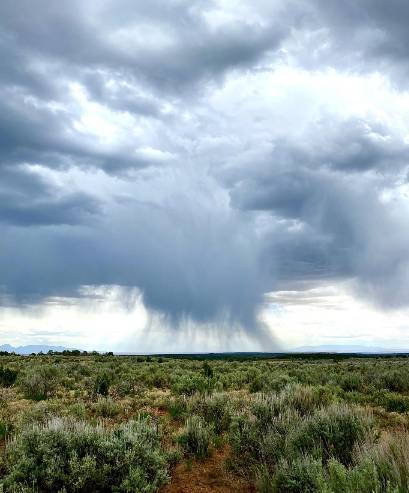Press Release
General summary:
Valley Conditions (SCAN): May was a disappointing month for precipitation in Utah’s valleys. We received 0.5 inches of precipitation at our SCAN sites, which was well below normal (64%), ranging from 0 inches of rainfall in the St. George region to 134% of normal precipitation in the Uinta Basin. Statewide soil moisture at Utah’s SCAN sites ended the month at 43% of saturation, which is (disappointingly) in the bottom 10th percentile and 12% lower than last year at this time. In fact, valley soils in the St. George region are the driest they have been since those SCAN sites were installed. Finally, as of June 1st both air and soil temperatures were fairly close to normal in Utah’s valleys.
Mountain Conditions (SNOTEL): Faring far better than Utah’s valley locations, in the mountains our precipitation was close to normal for May, with 2.3” of accumulation observed at our SNOTEL sites. Our water year to date precipitation currently stands at 108% of normal. Of Utah’s major watersheds, 6 had above normal mountain precipitation during May, and 10 were below normal (ranging from 35% in Southwestern Utah to 135% in the Weber-Ogden watershed). And in contrast with Utah’s valleys, as of June 1st statewide mountain soil moisture was above normal at 78% of saturation, reflecting the ongoing snowmelt contribution at our higher elevations.
Water availability: Utah’s reservoir storage is in OUTSTANDING shape. Statewide storage is currently at 91% of capacity, which is the highest it has been for at least 15 years, if not much longer. Multiple basins are at or close to their capacity for reservoir storage (Weber-Ogden, Tooele Valley, Duchesne, Provo, Price, Southeastern Utah, and Beaver watersheds). Water Availability Indices (WAIs) for Utah basins combine current reservoir conditions with observed monthly streamflow for each region. WAIs are at the 78th percentile or above for 5 of Utah’s major basins, and only the Lower Sevier is below the 40th percentile, which reflects the statewide benefit of two consecutive above-normal snowpack years. That said, the Great Salt Lake (GSL) and Lake Powell still need a lot of water, so it will continue to be important to use our water resources wisely this summer. Lake Powell is currently 36% full (based on current storage and a recently-updated maximum capacity value for the reservoir of 23,314 thousand acre-feet (kaf), consistent with the Bureau of Reclamation’s updated official value). Using current snowpack and accumulated precipitation conditions, the NRCS National Water and Climate Center’s 50% exceedance probability forecasts for April to July inflow, as well as June to July inflow, for Lake Powell are 5,240 kaf and 3,090 kaf, corresponding to 85 and 92 percent of median, respectively. The GSL also showed improvement from this year’s snowmelt runoff; the lake recently peaked at 4195 ft, which is (perhaps luckily) strikingly close to our previous forecasts for this year’s maximum lake stage. While GSL’s 4195 ft stage is over 6 ft higher than its historic low from a couple winters ago, according to the USGS’s “Great Salt Lake Hydro Mapper”, the lake is still roughly 3 ft below optimal levels.

